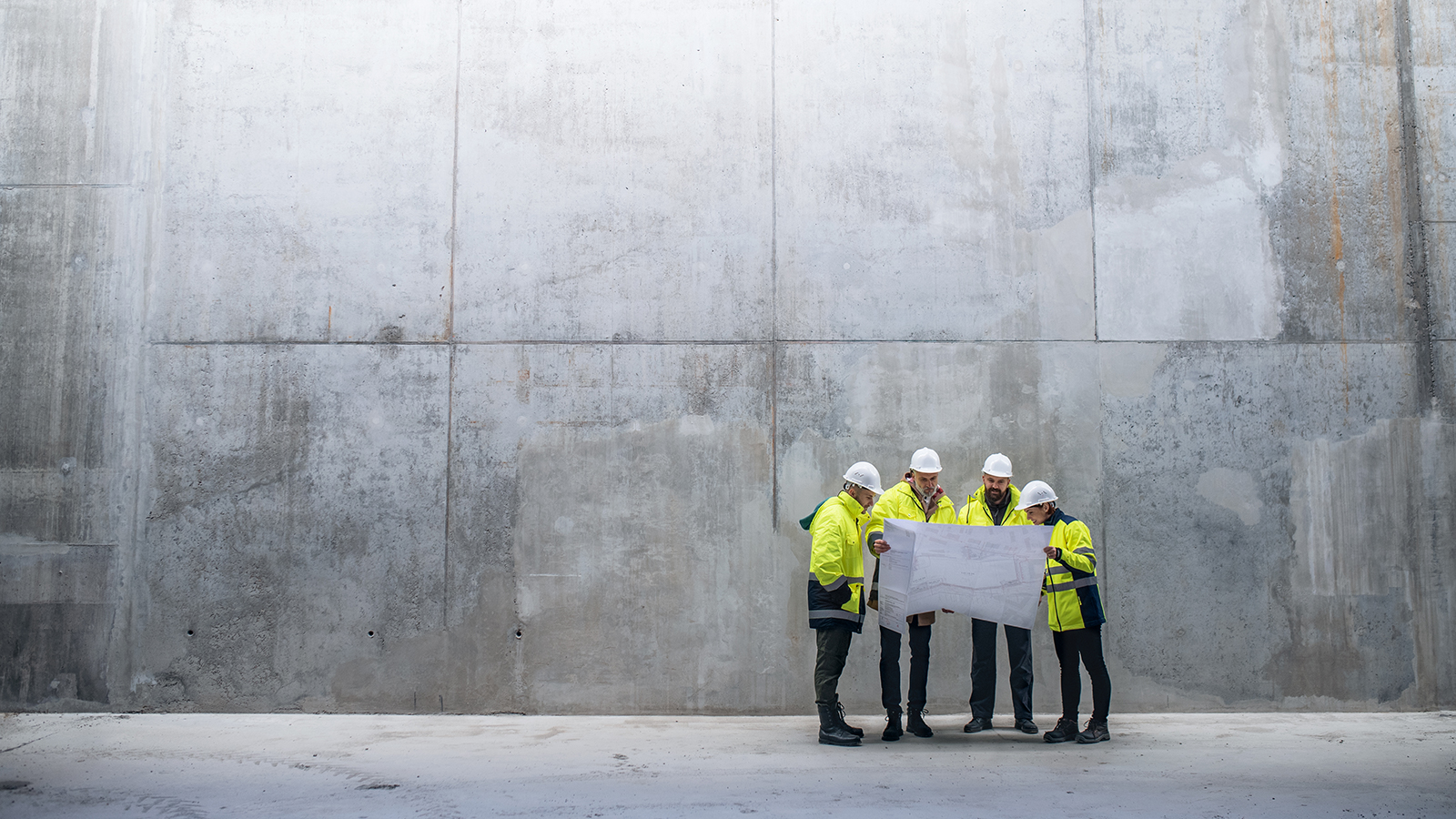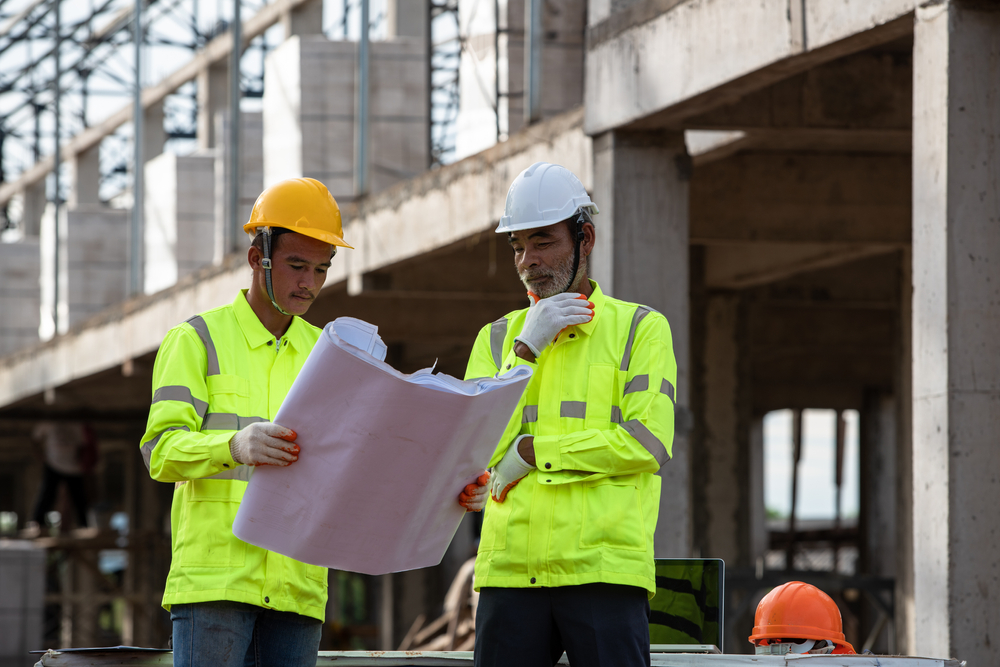The Important Function of Concrete Structure in Structural Honesty and Longevity
When it concerns constructing a home, the structure is a lot more critical than you may think. Concrete foundations provide unrivaled strength and resilience, ensuring your framework can endure various environmental difficulties. Without a strong base, you run the risk of prospective problems like changing or cracking, which can endanger safety and value. Recognizing the subtleties of concrete structures could be the key to protecting your financial investment for many years to come. What should you consider next?
Understanding the Significance of Concrete Foundations
Concrete structures are essential to the total security of any kind of framework, as they give the important support needed to withstand various lots and ecological problems. When you think of developing a home or a business room, the foundation is the first point you ought to think about. It functions as a barrier versus moisture, shielding your home from water damages. A well-placed concrete structure likewise stops settling and changing, which can lead to splits in walls and floorings. You'll intend to ensure that the structure is appropriately made and strengthened, as this influences the longevity of your building. Furthermore, a solid structure can improve power efficiency by decreasing air leakages. Bear in mind, overlooking the significance of a concrete structure can result in pricey repair work down the line. So, spending in a high quality structure upfront is important for the stability and durability of your structure.
Benefits of Concrete Foundations for Structural Stability
While lots of factors add to a structure's architectural honesty, concrete structures use unmatched resilience and strength. You'll value that concrete can hold up against extreme climate condition, standing up to both moisture and temperature variations. This durability means your structure is much less most likely to experience fracturing or moving in time, which can compromise its safety.Additionally, concrete's integral weight supplies a strong base, protecting against motion during all-natural events like quakes or floods. When you choose a concrete structure, you're likewise choosing low maintenance; unlike wood, it won't rot or attract parasites, saving you time and cash in repairs.Moreover, concrete's fire resistance provides included safety, guaranteeing your structure can endure high temperature levels without considerable damages. On the whole, buying a concrete structure suggests you're prioritizing the lasting security and integrity of your structure, making it a sensible choice for any type of construction job.
Typical Sorts Of Concrete Foundations
When it pertains to building foundations, understanding the typical kinds of concrete structures can aid you make educated selections for your task. One of the most widespread kinds consist of slab-on-grade, crawl room, and complete cellar foundations.A slab-on-grade foundation is a basic, cost-effective option, where a thick concrete slab is poured directly on the ground. This type functions well in cozy environments, as it minimizes warmth loss.Crawl room structures raise the home a little above ground, enabling ventilation and access to pipes and electric systems. This design can aid prevent wetness issues.Full basement foundations offer added living or storage room while providing outstanding structural assistance. They need more excavation and are commonly utilized in chillier environments to avoid frost heave.
Elements to Consider When Creating a Concrete Foundation

Best Practices for Putting Up Concrete Foundations
When you're mounting a concrete structure, proper site preparation is important to guarantee stability (West Coast General Engineering concrete foundation). You'll additionally need to understand support methods to improve stamina and longevity. Don't forget the treating procedure, as it plays a fundamental function in achieving a solid foundation.
Website Preparation Relevance
Although it may seem simple, proper website preparation is vital for ensuring a strong and sturdy concrete structure. Beginning by removing the location of any particles, greenery, or natural material that might jeopardize the structure's integrity. Next off, analyze the soil type and compaction; you could require to excavate or include products to produce a steady base. Degree the ground to guarantee even weight circulation and stay clear of clearing up issues in the future. Mounting proper water drainage systems is additionally essential to stop water accumulation, which can deteriorate the structure in time. Mark out the structure's dimensions properly to guide the pouring process. By adhering to these actions, you'll establish the phase for a successful concrete foundation that stands the test of time.
Support Strategies Explained
When the site is properly prepared, the next action in guaranteeing a durable concrete structure involves executing efficient reinforcement methods. You need to begin by utilizing steel rebar, which gives tensile toughness and aids prevent splitting. Lay the rebar in a grid pattern, making certain it rises using spacers to preserve proper coverage. Additionally, take into consideration making use of cable mesh for additional support, especially in areas based on hefty loads. Don't neglect to connect the rebar crossways securely with cable. For larger structures, fiber reinforcement can enhance sturdiness, minimizing the risk of contraction cracks. Always follow regional building regulations and standards to make sure compliance. By applying these support strategies, you'll substantially improve your foundation's stamina and durability, laying a solid groundwork for your framework.
Treating Refine Basics
To guarantee your concrete structure cures appropriately, it is very important to maintain appropriate moisture and temperature conditions instantly after pouring. Beginning by covering the surface area with a wet burlap or plastic sheet to preserve wetness. This keeps the concrete moisturized, preventing cracks and guaranteeing strength. You must likewise check the temperature; suitable healing conditions are in between 50 ° F and 90 ° F. If it's also hot, haze the surface consistently to avoid quick dissipation. For cool weather, think about utilizing protecting blankets to maintain heat. Go for a healing duration of at least seven days, as this is important for optimal toughness growth. By complying with these ideal techniques, you'll boost your foundation's longevity and long life, ensuring architectural stability for many years ahead.
Upkeep of Concrete Structures for Long Life
To keep your concrete foundation solid and long lasting, normal evaluations are crucial. You must likewise ensure effective drain remedies are in location to avoid water damages. If you find any type of splits, resolving them immediately will save you from larger troubles down the line.

Normal Examinations and Evaluations
While regular examinations and analyses could look like a job, they're important for preserving the stability of your concrete structure. By consistently checking for cracks, shifts, or indicators of wear, you can catch possible concerns before they rise into expensive repair work. Try to find any water pooling around the structure or uncommon settling, as these can indicate underlying problems. It's likewise a good idea to keep track of any type of adjustments in your home's framework, like doors that stick or home windows that don't open efficiently. Keeping a document of your evaluations assists track changes with time, permitting for positive maintenance. Inevitably, these assessments guarantee your foundation remains secure, sustaining the longevity and safety of your whole framework. Do not overlook this essential element of homeownership!
Effective Drain Solutions
Routine inspections can expose concerns like water drainage problems that may endanger your concrete foundation's security. To avoid water accumulation, guarantee your seamless gutters and downspouts straight water far from the structure. Installing French drains can properly redirect surface area and groundwater, lowering pressure on your structure wall surfaces. In addition, grading the soil around your home helps ensure that water streams away, instead of merging near your foundation.Consider making use of sump pumps in areas vulnerable to flooding, as they actively eliminate excess water. Frequently look for obstructions in drainage systems and clear them immediately. You'll shield your structure's stability and longevity by taking these positive actions. Bear in mind, reliable drain options are important for keeping a solid, long lasting concrete foundation.
Motivate Split Repair Works
When you notice splits in your concrete structure, addressing them quickly is vital for keeping its longevity. Tiny fractures can promptly advance into larger issues, compromising the structural honesty of your home. Frequently examine your foundation for signs of damage, such as horizontal or upright cracks. If you identify any type of, do not wait-- fix them quickly. You can use epoxy injections or concrete patching compounds, which work for sealing fractures. Constantly comply with the manufacturer's instructions and take into consideration consulting an expert for substantial damages. Bear in mind, timely repairs not just enhance your foundation's sturdiness but also save you cash in the future by protecting against more considerable repair work down the line. Remain aggressive, and your foundation will continue to be strong and safe and secure.
Dealing With Usual Concerns With Concrete Structures
Concrete structures can deal with various issues with time, making it critical to determine and address them promptly. Among the most typical issues is fracturing, which can browse around this site occur due to temperature level fluctuations or clearing up soil. If you see fractures, it's important to evaluate their size and depth; small splits can typically be secured, why not try here while bigger ones might need professional evaluation.Water breach is another major concern. Excess moisture can cause mold and mildew development and structural wear and tear. Warranty appropriate drain around your structure to reduce this risk. Additionally, look for indications of shifting or bowing wall surfaces, as this can suggest underlying problems with your foundation's stability.Regular assessments are fundamental to catch these troubles early. If you detect any type of concerning indications, do not wait to consult a structure specialist. By staying aggressive, you can preserve the integrity and longevity of your concrete foundation, ensuring your home continues to be safe and protected.
Often Asked Concerns
How Does Soil Kind Affect Concrete Foundation Efficiency?
Soil kind substantially impacts concrete foundation performance. If you've obtained large clay, for example, it can create shifting and fracturing. Sandy soil may bring about working out. Understanding your dirt aids guarantee a steady foundation.
Can Concrete Foundations Be Repaired if Damaged?
Yes, you can fix broken concrete foundations. Depending on the degree of the damage, methods like epoxy injection or piece jacking can recover security. It's finest to speak with a specialist for reliable solutions.
What Is the Regular Life-span of a Concrete Foundation?
A concrete structure generally lasts 30 to 100 years, depending on variables like soil conditions, climate, and maintenance. You'll desire to maintain an eye on it to ensure it remains in great shape throughout its life-span.
Are There Alternative Materials to Concrete for Foundations?
Yes, there are choices to concrete for foundations, like steel, wood, and even recycled materials. Each option has unique advantages and downsides, so you should consider your task's details demands when selecting the right product.
How Does Environment Impact Concrete Foundation Toughness?
Environment substantially influences concrete structure resilience (West Coast General Engineering concrete foundation). Extreme temperature levels, dampness, and freeze-thaw cycles can deteriorate the click to read product, bring about cracks and structural issues. You must think about local climate conditions when planning your structure to ensure lasting performance